
Culture
19:00, 10-Nov-2017
A decade of APEC fashion: What did the leaders wear?
By Li Bin
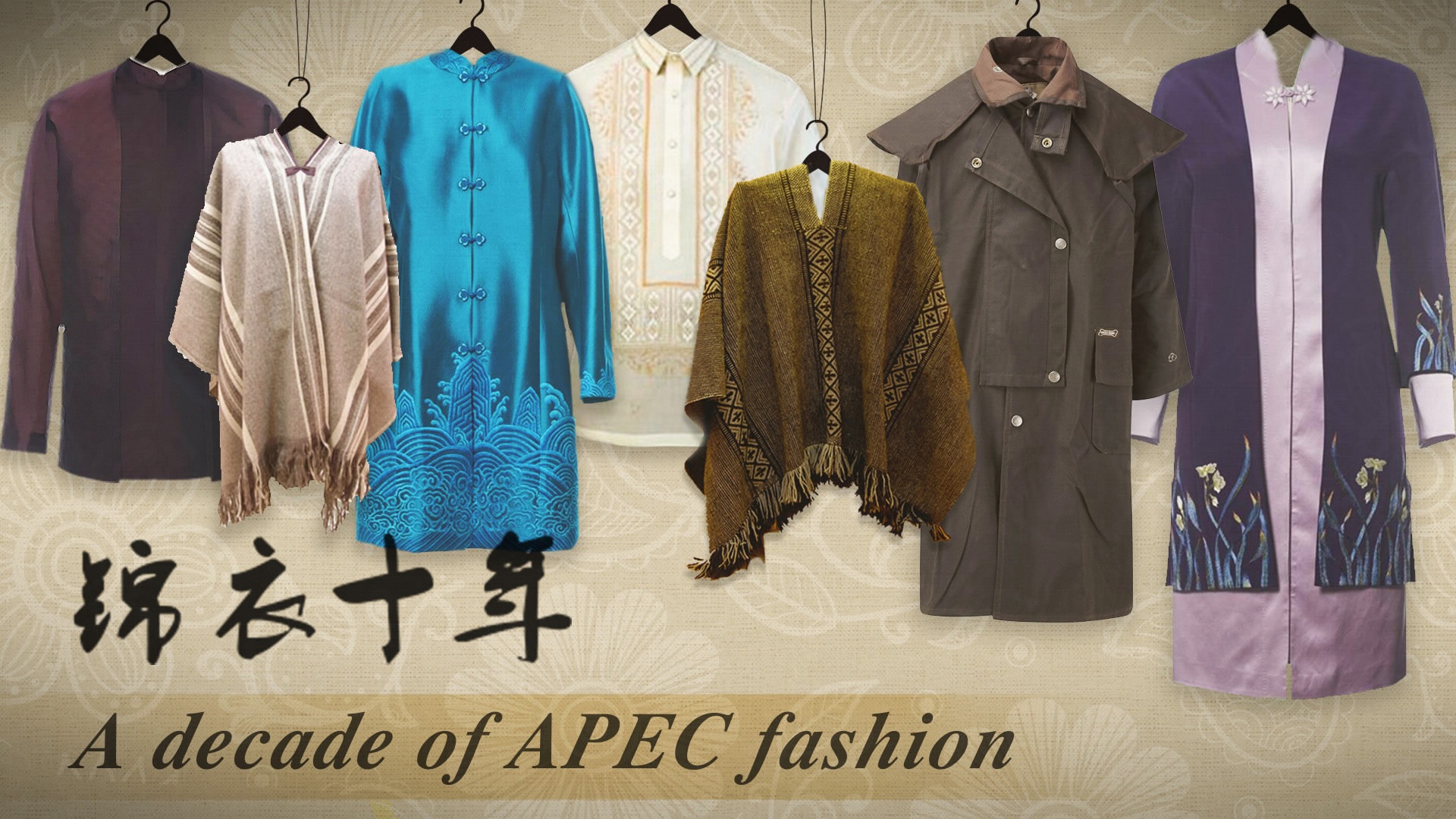
From Tang suits to bomber jackets, Driza-Bone coats to ponchos, leaders at APEC traditionally don the host country's traditional wear to show the bloc's unity and foster a sense of informal exchanges.
However, the suits aren't always popular and have sometimes sparked controversy, with many calling them "silly shirts."
The custom was established in 1993 when former US President Bill Clinton handed out bomber jackets to his counterparts. It has since become a tradition in the following years and a highlight of the often serious meetings.
Today we're taking you back 10 years to get a sense of APEC fashion.
2006 - Hanoi, Vietnam
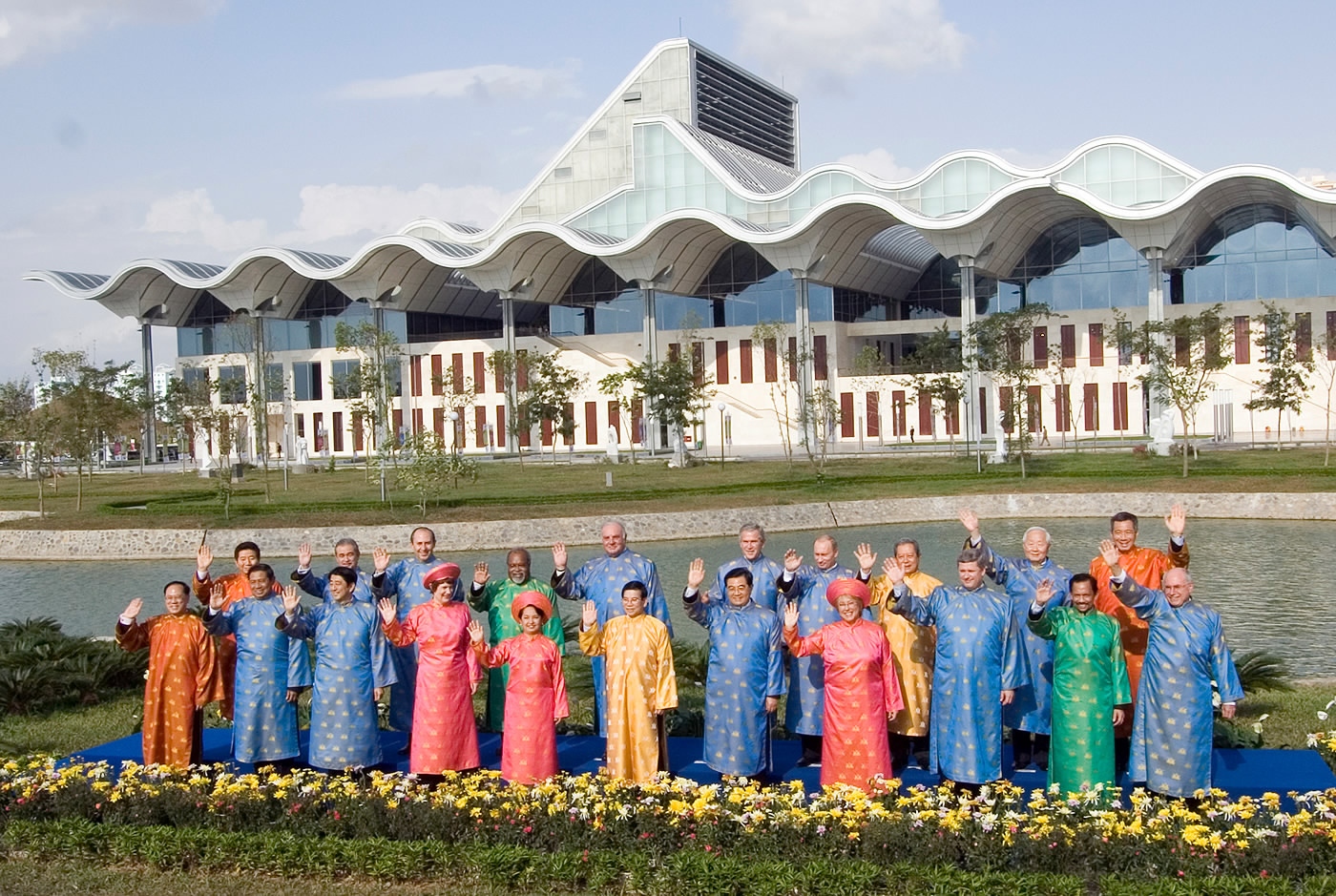
Photo via apec.org
Photo via apec.org
Ten years after the 2006 APEC meetings in Hanoi, Vietnam is once again the host. A decade ago, world leaders dressed up in the Vietnamese tunics, called "ao dai," patterned with golden lotus flowers. Blue, red, yellow and green ao dais were worn by male leaders, while women wore pink.
The ao dai is fitted long robe with two-side slits up to the waist, worn over silk white trousers. It is considered a symbol of Vietnamese culture. The garment is mostly worn by local women, especially during special occasions such as weddings, ceremonies and festivals.
2007 - Sydney, Australia
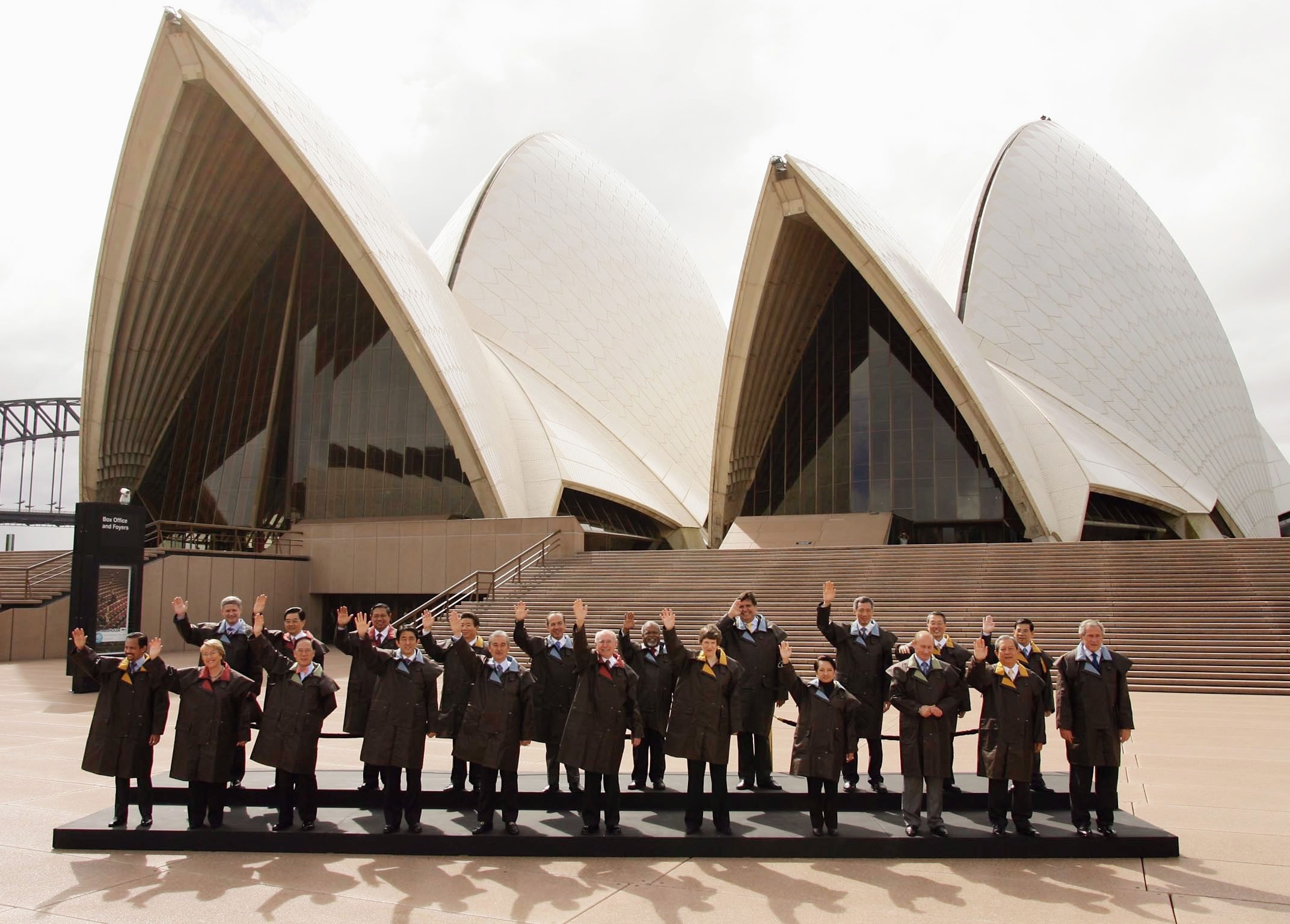
Photo via apec.org
Photo via apec.org
Australia's choice is a little less colorful – the Driza-Bone raincoat. The dark brown, waterproof jackets are favored by local farmers and field workers who carry them in all weathers. Driza-Bone originates from the phrase "dry as a bone.” The coat was initially designed as workwear for stockmen. It was later developed to protect horse riders from the rain, with straps that hold the coat to the rider's legs.
The coat's collar comes in different colors such as red, blue and yellow, representing Australia's coastlines, deserts, and trees.
2008 - Lima, Peru
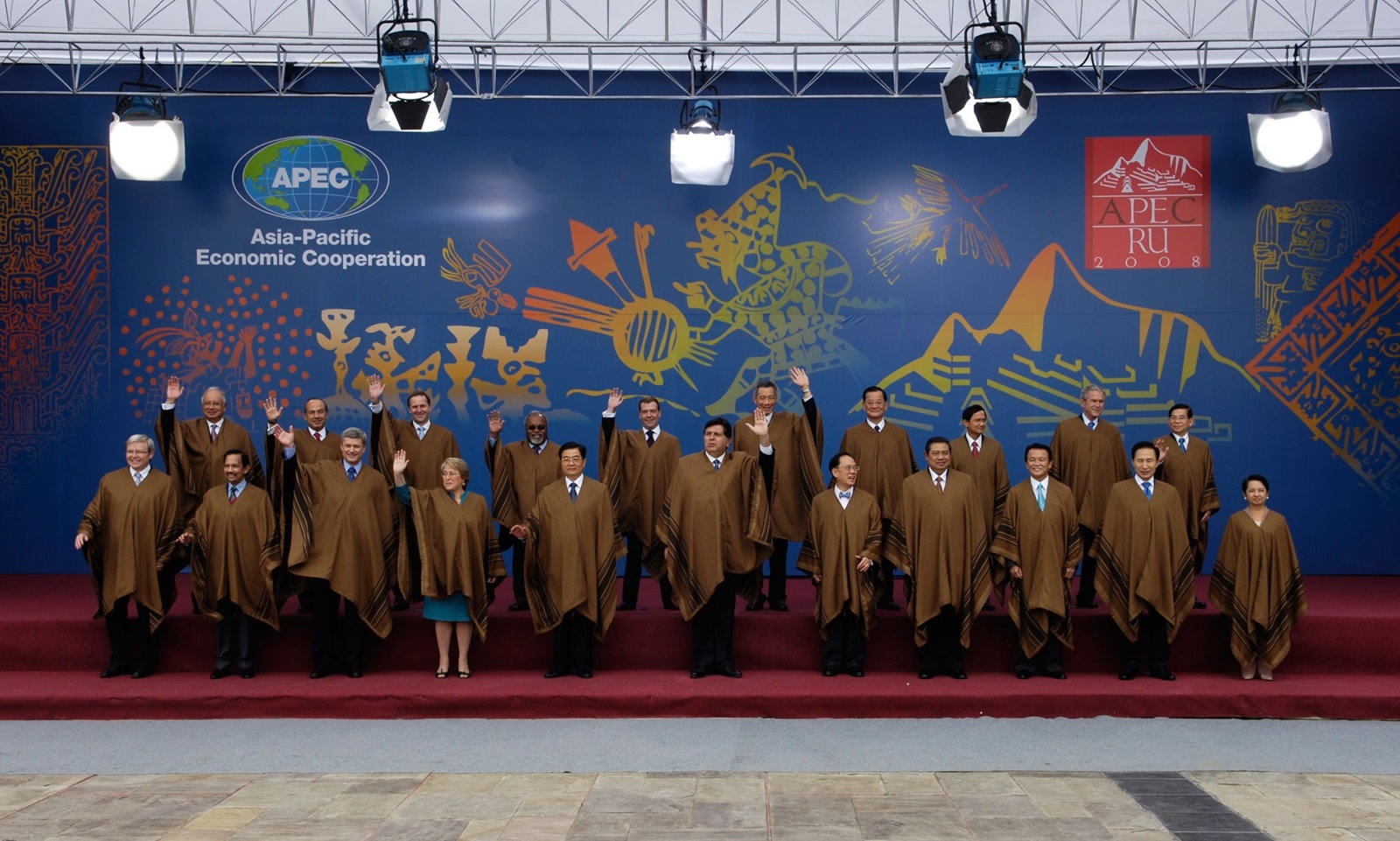
Photo via apec.org
Photo via apec.org
When Lima became a first-time host in 2008, organizers turned to the traditional Peruvian ponchos to be representative of the country’s culture. However, things didn't turn out as expected, with many people joking that the ponchos looked like "potato sacks.”
Ponchos were made from the wool of the vicuna, a wild South American animal related to the llama. Vicunas are usually found in the Andes mountains and were revered by the Incas.
2009 - Singapore
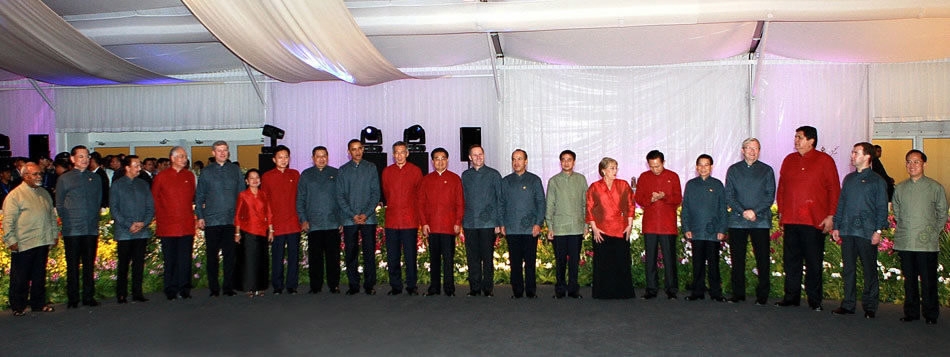
Photo via Chinanews.com
Photo via Chinanews.com
The Singapore gathering saw leaders dressed in long-sleeved linen shirts with mandarin collars. The style is a combination of Chinese, Malaysian and Indian costumes. Leaders were provided three colors – blue, red and green – to choose from.
2010 - Yokohama, Japan
2011 - Honolulu, United States
2012 - Vladivostok, Russia
Japan, the US and Russia all passed on the tradition of donning local costumes. In 2010, Japan opted to have the leaders dress in smart casual instead of kimonos or any other form of its traditional attire.
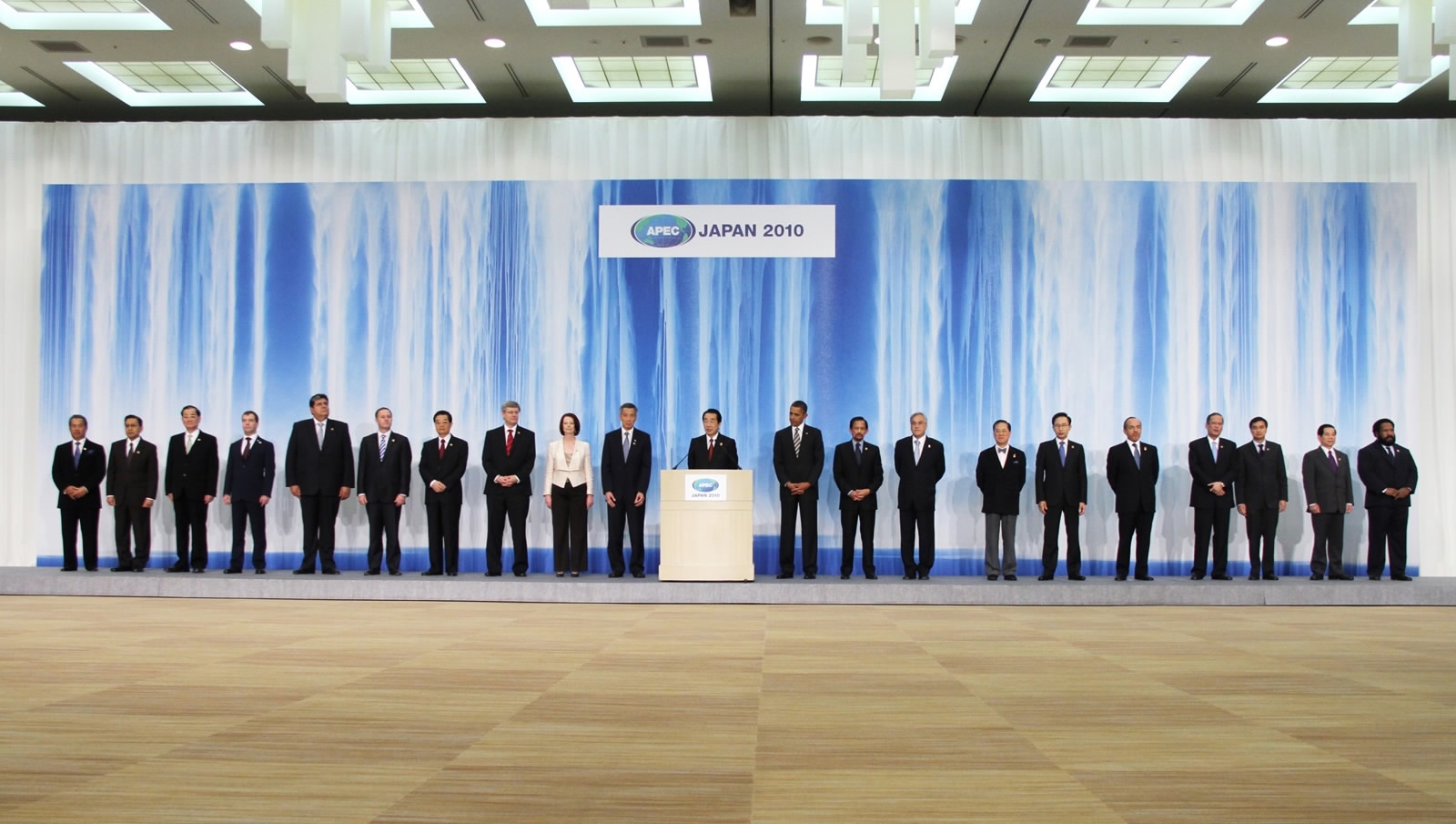
Photo via apec.org
Photo via apec.org
The following year in Honolulu, Hawaii leaders were given specially-designed aloha shirts as a gift, but were not required to wear it for the photo.
Again in 2012, Russia followed suit and did not offer special costumes to the leaders.
2013 - Bali, Indonesia

Photo via 163.com
Photo via 163.com
The long-time tourist destination chose the "endek" for their prestigious guests. Endek is the Balinese traditional woven textile. It is dyed with four colors: red, blue, purple and green. The outfits were made by a Chinese company in Indonesia which was founded 86 years ago.
In the past, endek cloths were generally produced and used by the princely courts and aristocratic families. Now, the Balinese endek is created and produced not only for tourists who visit the island, but also for overseas markets.
2014 - Beijing, China
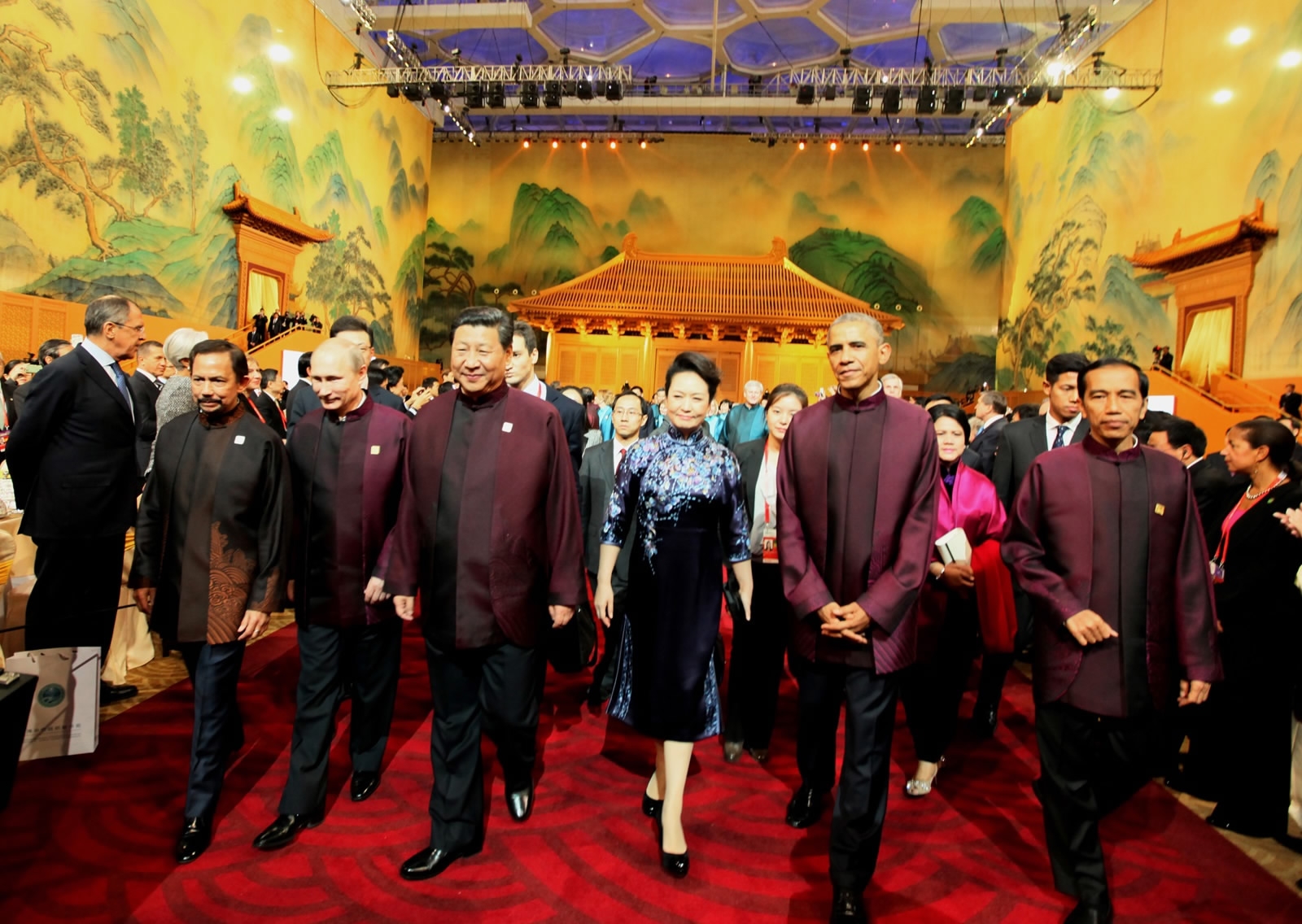
Photo via apec.org
Photo via apec.org
Chinese designers updated the traditional Tang suits and silk coats for the photo of the year. The male suits featured jacquard brocade, decorative patterns that reflected the waves of the sea, stand-up collars and raglan sleeves, while the female outfits featured Chinese-style details with a feminine flair.
A team of designers worked a whole year to prepare the outfits, which came in three colors – burgundy, sapphire and dark brown.
2015 - Manila, the Philippines
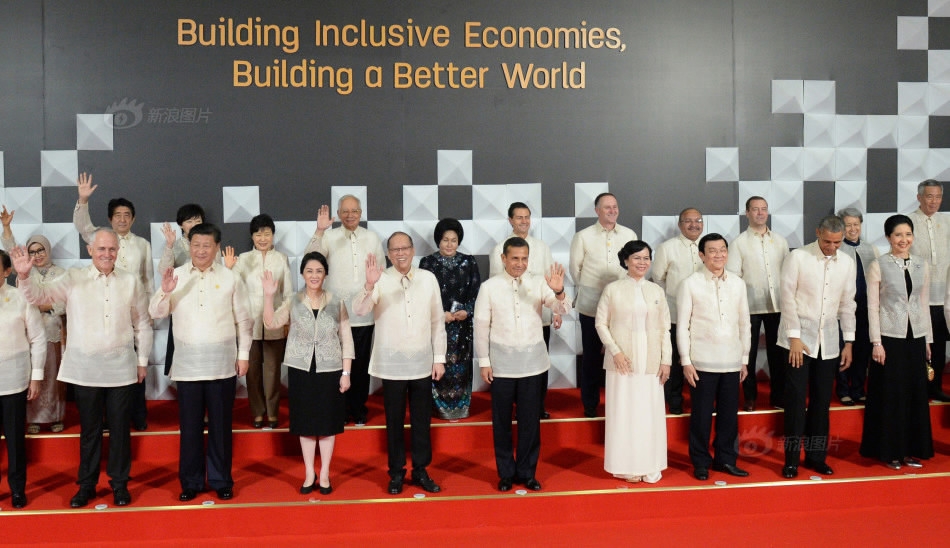
Photo via caijing.com.cn
Photo via caijing.com.cn
The Philippines chose the "Barong Tagalog" for the leaders. The shirts are sheer and made from pineapple fiber and silk. Fashion designer Paul Cabral said she wanted "their barongs to be very Filipino but at the same time, the different economic leaders be able to identify with their barongs.”
For Filipinos, a barong is akin to what a suit or tuxedo is to the Western world. The casual ones can be worn to the office and the formal ones are for special occasions like weddings and the APEC meetings.
2016 - Lima, Peru
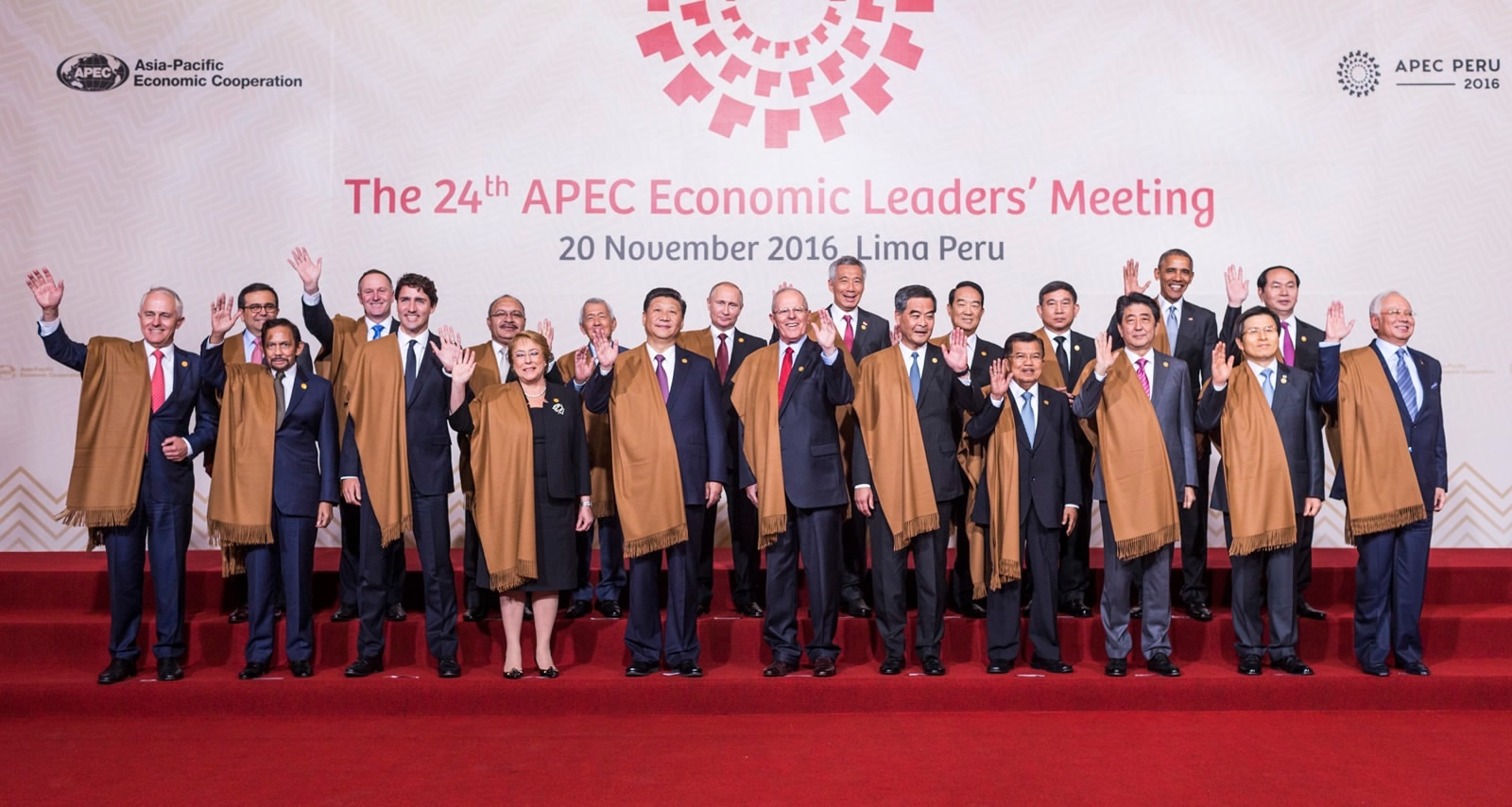
Photo via apec.org
Photo via apec.org
With Lima’s second time hosting the APEC meetings, Lima decided to have the leaders wear traditional shawls over their shoulders. It was the second time for Lima to host the APEC meetings. The chocolate brown shawls were also made out of vicuna wool.

SITEMAP
Copyright © 2018 CGTN. Beijing ICP prepared NO.16065310-3
Copyright © 2018 CGTN. Beijing ICP prepared NO.16065310-3